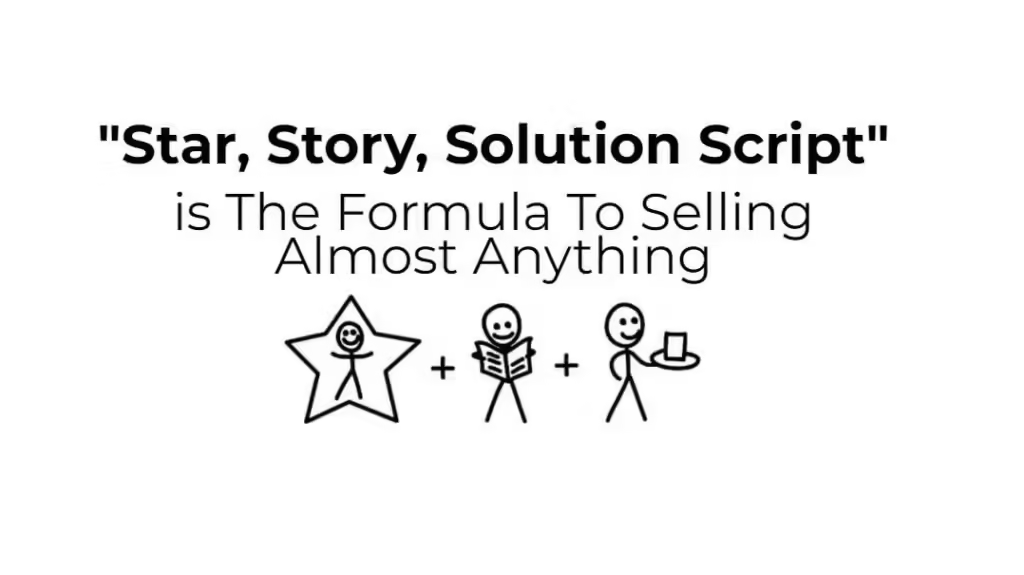Introduction to Copywriting Formulas
Copywriting formulas are structured frameworks that guide writers in creating persuasive and compelling content. These formulas are essential for crafting effective landing page sales copy because they leverage psychological principles to influence readers. By understanding and applying these formulas, copywriters can strategically organize their content to captivate the audience, evoke emotions, and ultimately drive conversions.
At their core, copywriting formulas are designed to simplify the writing process while ensuring that key elements of persuasion are addressed. They take into account human psychology, such as the need for clarity, the desire for solutions to problems, and the impact of storytelling. For instance, formulas like AIDA (Attention, Interest, Desire, Action) follow a logical progression that mirrors the natural decision-making process of potential customers. By first capturing attention, then building interest, creating desire, and finally prompting action, this formula effectively guides readers through the sales funnel.
Another common scenario where copywriting formulas excel is in addressing objections. Formulas like PAS (Problem, Agitate, Solution) highlight a problem, intensify the discomfort associated with it, and then present a solution, making the reader more receptive to the proposed offer. This technique is particularly effective for landing pages, where the goal is to convert visitors into customers by presenting a clear and compelling narrative.
Furthermore, the use of storytelling within these formulas can significantly enhance engagement. By weaving a relatable story or case study into the copy, writers can build a connection with the reader and make the message more memorable. This emotional engagement is crucial for driving conversions, as it helps to establish trust and credibility.
The ultimate goal of using copywriting formulas is to create a seamless and persuasive journey for the reader. By structuring content in a way that systematically addresses the audience’s needs and objections, these formulas can significantly increase the likelihood of converting visitors into loyal customers.
Popular Copywriting Formulas and How They Work
Effective landing page sales copy often relies on time-tested copywriting formulas to capture the audience’s attention and drive conversions. Among the most popular are AIDA (Attention, Interest, Desire, Action), PAS (Problem, Agitate, Solve), and FAB (Features, Advantages, Benefits). Understanding and mastering these formulas can significantly enhance the effectiveness of your sales copy.
AIDA Formula
The AIDA formula, which stands for Attention, Interest, Desire, and Action, is a classic approach. The first step is to grab the reader’s attention with a compelling headline or opening statement. Next, you generate interest by highlighting a relevant issue or need. Then, you build desire by showcasing the benefits and value of your product or service. Finally, you prompt the reader to take action, such as making a purchase or signing up for a newsletter. For example, a landing page for a weight loss program might start with a striking statistic about obesity (Attention), discuss the struggles of losing weight (Interest), present the unique features of the program (Desire), and conclude with a call-to-action to join the program (Action).
PAS Formula
PAS, which stands for Problem, Agitate, Solve, is another powerful formula. This approach begins by identifying a problem that the audience faces. You then agitate the problem by delving into the emotional and practical consequences of not addressing it. Finally, you offer a solution that alleviates the problem. For instance, a landing page for an antivirus software might start with the problem of increasing cyber threats (Problem), discuss the potential damage and stress caused by data breaches (Agitate), and then present the software as the ultimate protection (Solve).
FAB Formula
Lastly, the FAB formula, which stands for Features, Advantages, Benefits, focuses on the product or service itself. You start by listing the features, then explain the advantages these features provide, and conclude with the benefits to the user. For example, a landing page for a new smartphone might highlight its high-resolution camera (Feature), explain how it captures stunning photos even in low light (Advantage), and emphasize the joy of preserving precious memories with perfect clarity (Benefit).
By leveraging these copywriting formulas, you can create structured, persuasive, and effective landing page sales copy that resonates with your target audience and drives them towards the desired action.
Step-by-Step Guide to Implementing Copywriting Formulas
Implementing copywriting formulas effectively requires a structured approach. The first step is to research your target audience thoroughly. Understanding who they are, their demographics, and, most importantly, their pain points is crucial. Utilize surveys, customer feedback, and market analysis to gather relevant data. This information will serve as the foundation for your copy.
Once you have a clear picture of your audience, the next step is to choose the appropriate copywriting formula. For instance, the AIDA (Attention, Interest, Desire, Action) formula is widely used for its efficacy in guiding potential customers through a structured buying journey. Begin by crafting a compelling headline that grabs attention. This should be followed by engaging content that builds interest and highlights the benefits of your offering, addressing the pain points identified during research.
Next, fuel the desire by emphasizing unique selling points and value propositions. Use persuasive language to create an emotional connection, making your audience envision the benefits they will gain. Finally, prompt action with a clear, compelling call to action (CTA). Ensure the CTA is concise and leaves no room for ambiguity.
Editing and optimizing your copy are equally important. During the editing phase, focus on clarity, consistency, and brevity. Each sentence should serve a specific purpose and contribute to the overall message. Remove any jargon or unnecessary fluff that could detract from the core message. Additionally, use formatting tools such as bullet points, bold text, and subheadings to enhance readability.
To make your copy more engaging and persuasive, incorporate storytelling elements. Real-life examples, testimonials, and case studies can add credibility and make your message more relatable. Another tip is to use power words and phrases that evoke strong emotions and prompt action. Moreover, A/B testing different versions of your landing page copy can provide insights into what resonates best with your audience.
By following these steps and leveraging proven copywriting formulas, you can create landing page sales copy that is not only engaging but also highly effective in driving conversions.
Common Mistakes to Avoid When Using Copywriting Formulas
When harnessing the power of copywriting formulas for effective landing page sales copy, it’s crucial to navigate common pitfalls that can undermine your efforts. One frequent mistake is becoming overly formulaic. While templates and structures can serve as valuable guides, rigidly adhering to them can result in bland, uninspired copy. To avoid this, infuse your writing with unique brand voice and personality. Tailor the formula to fit the specific context and objectives of your landing page.
Another significant error is neglecting the audience’s needs. Copywriting should always center around the target audience, yet many copywriters focus too much on the product or service itself. This approach can alienate potential customers. Instead, emphasize the benefits and solutions your offering provides. Conduct thorough research to understand your audience’s pain points, desires, and preferences, and craft your copy to address those insights directly.
Failing to test and optimize the copy is another common oversight. Even the most well-crafted copy can fall short if not continually refined. A/B testing different headlines, calls to action, and body copy can reveal what resonates best with your audience. Utilize analytics and feedback to make data-driven adjustments, ensuring your landing page remains effective over time.
Consider the case of a company that initially struggled with a high bounce rate on their landing page. By tweaking their copy to be less formulaic and more attuned to their audience’s needs, and by rigorously testing different versions, they managed to significantly improve engagement and conversion rates. Conversely, another business experienced stagnant sales because they relied too heavily on a generic template, failing to connect with their audience or optimize their copy based on performance metrics.
Incorporating these insights, it’s clear that while copywriting formulas can be invaluable tools, they require thoughtful application. Prioritizing authenticity, audience relevance, and continuous optimization will enhance the effectiveness of your landing page sales copy, driving better results and fostering stronger customer connections.



